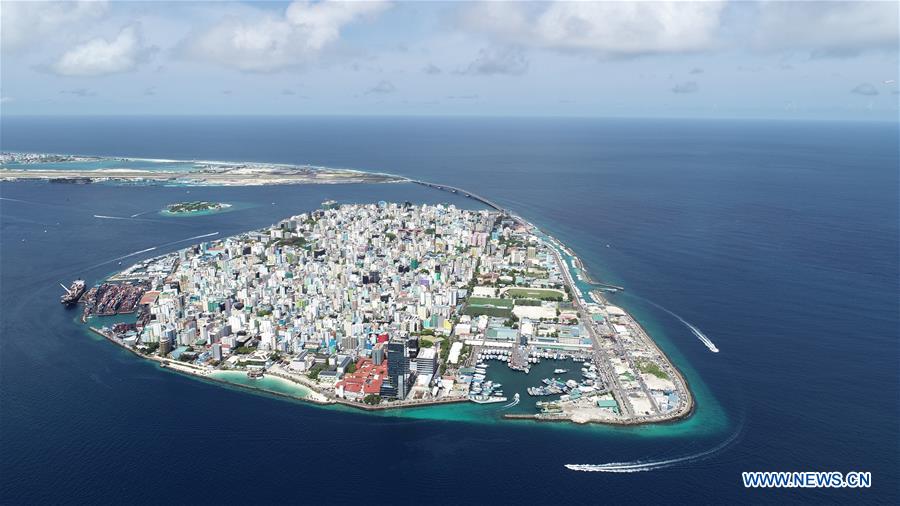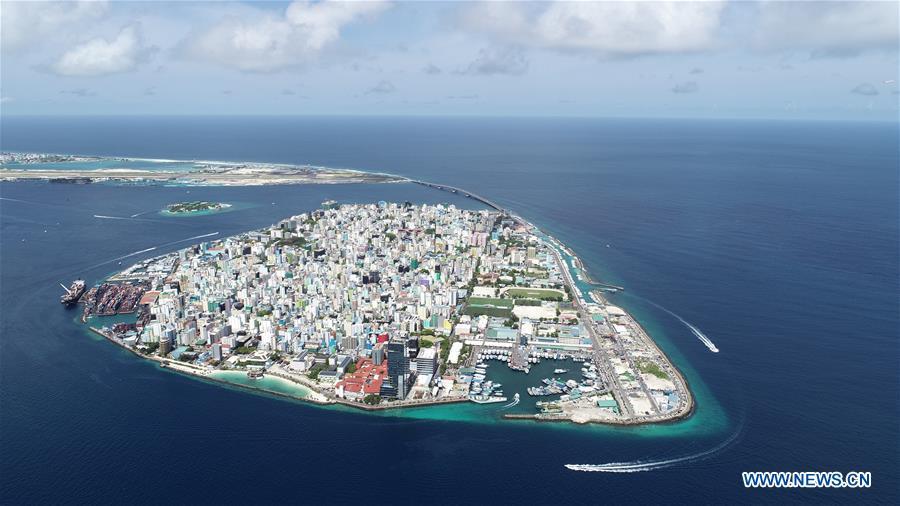When Chinese President visited Central and Southeast Asia in the second half of 2013, the initiative of jointly building the Silk Road Economic Belt and the 21st-Century Maritime Silk Road (hereinafter referred to as the Belt and Road Initiative, BRI) was raised. In March 2015, the Chinese government published the “Vision and Actions on Jointly Building Silk Road Economic Belt and 21st-Century Maritime Silk Road” white paper, which stated that the Belt and Road Initiative is open and inclusive. China welcomes all countries and international or regional organizations to join the initiative, which is internationally recognized and has received positive responses.
Energy is indispensable for progress in mankind's development, and is closely related to people's livelihoods in all countries. Strengthening energy cooperation in jointly building the Belt and Road Initiative will stimulate wider and deeper regional cooperation at a higher level for the economic prosperity of the whole world -- a goal which China and other countries around the world strive for. The National Development and Reform Commission (NDRC) and the National Energy Administration (NEA) of China have jointly drafted and published this white paper to promote the implementation of the Initiative, instill vigor and vitality into the ancient Silk Road, and promote mutually beneficial collaboration to new highs.
-- І. Global Energy Development
Complex and profound changes in terms of the global energy market are taking place. The supply and demand balance in the market is generally easing; response to climate change is moving into a new stage; a new round of revolution in energy technology accelerates; a new mechanism for global energy governance is developing; but the goal of “sustainable energy for all” is nonetheless far from reach and all countries face big challenges in their energy development.
The Belt and Road Initiative seeks to foster energy cooperation in order to jointly build up an open, inclusive, and beneficial community of shared interests, responsibility and destiny. The Initiative also aims to improve regional energy safety and to optimize the distribution of energy resources. It will integrate regional energy markets and push forward the green and low-carbon development of regional energy. By doing so, the scheme will meet increasing demand for energy and advance economic development in countries involved in the Initiative.
At the age of globalization, China is closely connected with the rest of the world, and so is its energy sector. China will continue to promote international cooperation on energy and integrate itself even deeper to the world energy system. The Initiative not only underpins China’s energy development but also coordinates such development in other countries in the world. China is committed to shouldering more responsibilities and obligations within its capacity, and seeks to make greater contributions to the development of mankind's energy sources.
-- II. Cooperation Principles
(I)The energy cooperation is open and inclusive. It welcomes the participation of all countries as well as international or regional organizations, and is designed to enhance dialogue between nations. We intend to seek common ground while respecting our differences and jointly discuss, initiate and enjoy the achievements to come which will be spread to an increasing amount of people and a wider range of regions.
(II)The cooperation seeks mutual benefit. It accommodates the interests and concerns of all parties involved, seeks a conjunction of interests and the "largest common denominator" for cooperation, and tap into the full potential and creativity of all parties to achieve common development.
(III)The cooperation is market-oriented. It will abide by market rules and international norms, give play to the decisive role of the market in resource allocation and let the governments perform their functions of coordination and guidance.
(IV)The cooperation will be safe and secure. We will strengthen communication, increase mutual trust with relevant countries, and reduce risks in the energy supply mechanism. We will jointly secure international energy production and transmission pathways and build up a safe and efficient energy security system.
(V)The cooperation will be green and efficient. We will attach great importance to the issue of environmental protection in the process of energy development, and strive to encourage the efficient development and utilization of clean energy. We will strictly control the emission of pollutants and green-house gases, raise energy efficiency and contribute to green and efficient development in all countries.
(VI)The cooperation will be harmonious. We will focus on the balanced development of energy sector and social responsibilities, ensure a satisfactory technological transition, and provide training for local people. We respect the religious beliefs and diverse cultures of different countries, strongly support public welfare causes and help economic development so that all peoples can coexist in peace and prosperity.
 Aerial photo taken on Sept. 1, 2019 shows the panoramic view of Male,
capital of Maldives. The China-Maldives Friendship Bridge, the first
cross-sea bridge in the Maldives built by a Chinese company connecting
the Maldivian capital of Male with neighboring Hulhule Island, was
inaugurated on Aug. 30, 2018 and put into use on Sept. 7, 2018. The
2-km-long bridge is an iconic project of the Maldives and China in
co-building the 21st Century Maritime Silk Road. The bridge makes it
possible for locals and tourists to travel between the two islands
within five minutes. In one year, the bridge has brought great
convenience for local people in their daily life. (Photo by Wang
Mingliang/Xinhua)
Aerial photo taken on Sept. 1, 2019 shows the panoramic view of Male,
capital of Maldives. The China-Maldives Friendship Bridge, the first
cross-sea bridge in the Maldives built by a Chinese company connecting
the Maldivian capital of Male with neighboring Hulhule Island, was
inaugurated on Aug. 30, 2018 and put into use on Sept. 7, 2018. The
2-km-long bridge is an iconic project of the Maldives and China in
co-building the 21st Century Maritime Silk Road. The bridge makes it
possible for locals and tourists to travel between the two islands
within five minutes. In one year, the bridge has brought great
convenience for local people in their daily life. (Photo by Wang
Mingliang/Xinhua)
-- III. Cooperation Priorities
We hereby propose the following key areas where we could strengthen our cooperation.
(I)Policy coordination. We stand ready to communicate and coordinate with other countries on our energy development policy and planning. We will jointly create a plan for cooperation as well as its measures for implementation, negotiate to solve issues related to our collaborative efforts and provide policy support for pragmatic cooperation.
(II)Unimpeded trade. We will strive to effectively facilitate the trade of conventional energy resources, reduce trade costs, and enable the optimization of resource allocation in larger scales. In addition, we will strengthen our ability to fend off risks and cultivate an open and stable global energy market.
(III)Energy investment cooperation. We encourage enterprises to adopt various measures including direct investment, merger and acquisitions, and public-private-partnerships (PPP) to deepen energy investment cooperation. We will enhance the involvement of financial institutions in the lifecycle of energy cooperation projects to create sound energy “industry plus finance” cooperation pattern.
(IV)Energy production capacity cooperation. We stand ready to cooperate with other countries in the production of equipment related to this sector and in construction and engineering to jointly improve the energy industry's development for mutual benefit. We will conduct joint research and development of high-end technology and equipment to advance innovation. We will deepen our cooperation in standardization of all energy sectors.
(V)Energy infrastructure connectivity. We will continue to improve and expand the scale of oil and gas pipeline connectivity, and jointly maintain its safety. We will advance cross-border power transmission line construction, upgrade and retrofit the regional power grid, negotiate to establish the regional power market and continually improve trade levels.
(VI)Sustainable energy for all. We will actively implement the 2030 Sustainable Development Agenda and Paris Agreement on climate change. We will advance affordable, reliable and sustainable modern energy services for all, promote clean energy investment and development in relevant countries, and work together to achieve greater energy efficiency.
(VII)Better global energy governance structure. We will build on the Belt and Road energy cooperation system, synchronize countries’ effort to jointly build a green and low-carbon global energy governance structure and push forward global green development together.
-- IV. China in Action
We will build on the multilateral and bilateral cooperation mechanisms to advance Belt and Road energy cooperation to a higher level.
We will establish and improve a bilateral joint working mechanism, and create a plan for its implementation. We will give full play to the energy cooperation mechanism, and coordinate to push forward its projects.
We will actively participate in multilateral energy cooperation within the framework of the UN, G20, APEC, SCO, BRICS, The Lancang-Mekong Cooperation Mechanism, The Greater Mekong Sub-region, Central Asia Regional Economic Cooperation, ASEAN-China, ASEAN+3, East Asia Summit, Asia Cooperation Dialogue, Cooperation between China and Central and Eastern European Countries, China-League of Arab States, and China-Gulf Cooperation Council and etc.
We will enhance our cooperation with IEA, OPEC, IEF, IRENA, Energy Charter, World Energy Council and other international organizations.
We will actively implement the ASEAN-China Clean Energy Capacity Building Plan, promote the building of China-League of Arab States Clean Energy Center, China and CEEC (Central and Eastern European Countries) Energy Projects Dialogue and Cooperation Center. We will explore international platforms for their constructive roles, including the Global Energy Transition Forum and the East Asia Summit Clean Energy Forum.
We will work with other countries and regions to create the Belt and Road Energy Club, and provide a platform for deeper understanding and wider consensus on energy cooperation for more countries and regions involved in the Belt and Road Initiative. We will work with think tanks from different countries, and advance exchanges of high-caliber personnel and information sharing.
-- V. Embracing a Brighter Future Together
Though proposed by China, the Belt and Road energy cooperation is in the interests of all countries along the land and sea routes. China is ready to join hands will all countries to seize the opportunity provided by the Initiative, promote energy cooperation in a larger scope, with higher standards and at deeper levels. We welcome the active participation of all countries and international or regional organizations in the Initiative.
China is ready to work with all countries to identify projects that accommodate all relevant parties’ interests, and accelerate the launching of projects that are ready for implementation, so as to ensure early harvest.
The Belt and Road energy cooperation features mutual respect and trust, mutual benefit and win-win cooperation. As long as all the countries along the routes make concerted efforts to collaborate, we will build an energy community of shared interests, responsibilities and common destiny featuring openness, inclusiveness and mutual benefit.




 A single purchase
A single purchase









